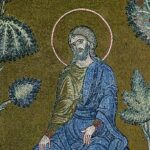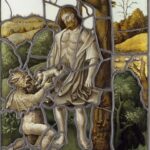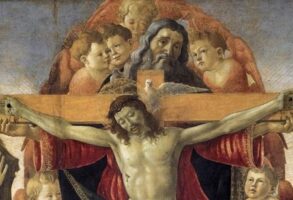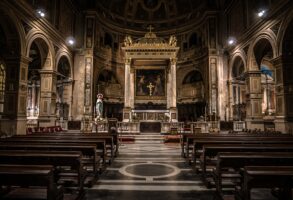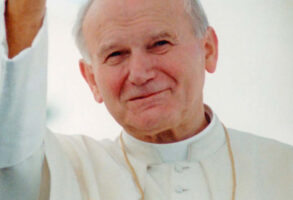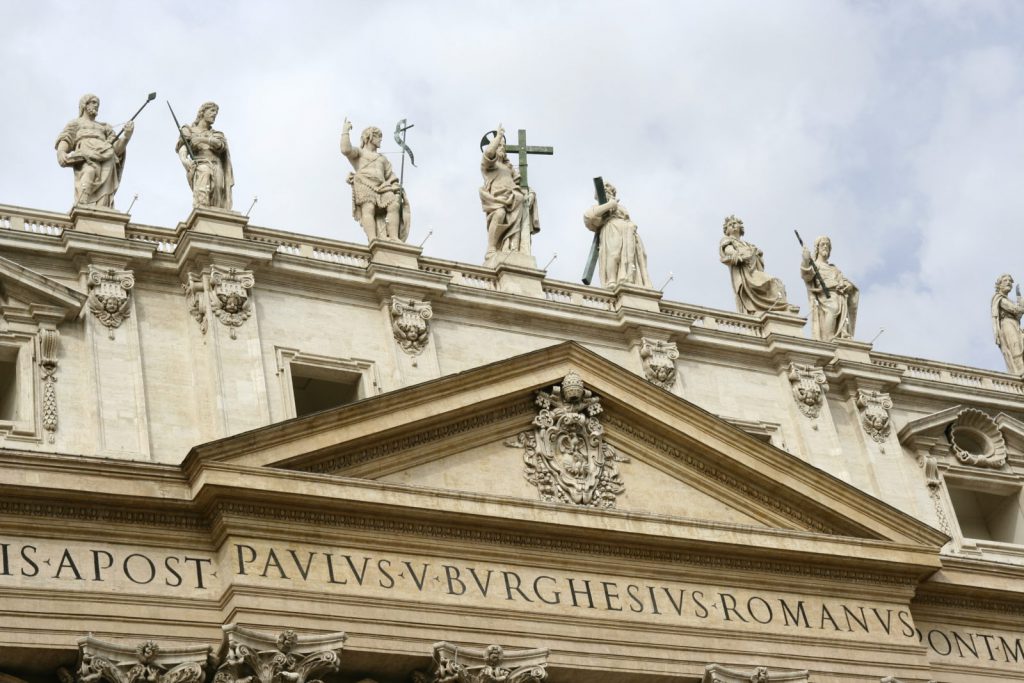
Published December 20, 2017
The Washington-based Religious Freedom Institute, in cooperation with the Baylor University Institute for the Studies of Religion and the Forum for Promoting Peace in Muslim Societies, recently held a consultation between Christian and Muslim scholars in Rome, “Promoting Religious Freedom in the Middle East.” NRO contributor George Weigel delivered the following remarks to the consultation on the evening of December 14. The title of his lecture was “The Catholic Journey to Religious Freedom: Dignitatis Humanae – Fundamental Change or Development?”
The Second Vatican Council’s Declaration on Religious Freedom, often cited by its Latin title, Dignitatis Humanae (DH), is rightly regarded as a watershed, a crucial moment, in the Catholic Church’s centuries-long engagement with political modernity. But what kind of engagement was it? Did DH mark a rupture in the Catholic tradition’s thinking about the relationship between religious and political authority in society and in the state? Or was DH a genuine, which is to say organic, development of Catholic church-state theory?
According to one telling of the tale, prominent among both Catholic progressives and Catholic traditionalists, DH marked the end of a long war of attrition between Catholicism and political modernity, in which the Church — having unsuccessfully fought a series of rearguard actions followed by several tactical retreats — finally admitted that it had been wrong about the political regimes that had emerged from the American and French Revolutions. And in doing so, that story-line continues, Catholicism surrendered to the claims of the Enlightenment about the proper organization of society, which include a radical separation of religious conviction and religious authority from public life.
I’m sure you’ve all heard that telling of the story before. What I am proposing tonight is that that is not simply an incomplete picture; from both a historical and a theological point of view, it is a false picture. And it’s a false picture that impedes a truth-based interreligious dialogue between Catholics and Muslims in the 21st century.
It’s a false picture historically because it presumes that religious tolerance and religious freedom in any meaningful sense of the term only began with the Reformation and the Enlightenment. But this 500th anniversary of the Protestant Reformations — I use the plural deliberately, because there were many different and often competing “Reformations” — ought to have reminded us that these Reformations were hardly the occasion for the triumph of religious freedom and tolerance. Rather, they were the occasion for considerable inter-religious bloodletting, among Protestants as well as between Protestants and Catholics. And if it is also true, as the most recent historical scholarship suggests, that the horrible Thirty Years War that devastated Europe was at least as much a result of modern state-formation as of interreligious conflict, it is also true that the resolution of that war in the 1648 Peace of Westphalia cannot be considered a triumph for religious tolerance and religious freedom.
Why? Because the Westphalian formula, cuius regio eius religio — the prince’s religion is the religion of the state and must be the religion of the people — can and should be considered the modern West’s first experiment in the totalitarian coercion of conscience by state power. And as those experiments intensified and secularized in succeeding centuries, the death toll expanded exponentially. Now that was not the explanation of the Westphalian settlement that I was taught in university-level history classes; I doubt that many of you were taught “Westphalia” that way either. But two decades ago, in Poland, I was given a fresh look at a tangled history by scholars formed in a country that did not experience the Thirty Years War, but which did have a devastating experience of both the mid-20th-century totalitarianisms. And that produced in Poland some interesting theories of the genealogy of state coercion of religious conscience, according to which the Poles — whose king in the mid-16th century, Sigismund Augustus, had told them that he was “not the king of your consciences” — considered Westphalia a sad, indeed prototypical example.
As for the Enlightenment: Well, Voltaire may have claimed that he would defend to the death the right to express the erroneous opinions of those with whom he disagreed, but many of his political heirs in the French Revolution were not so committed. Thus the French Revolution conducted a bloody persecution of the Catholic Church — first in the name of subordinating the Church to state power, and then in the name of substituting a secular “religion of reason” for biblical religion. That pattern was replicated in much of Western Europe throughout the 19th and early-20th centuries, in venues ranging from Germany (the Kulturkampf) to Italy (the anticlerical Risorgimento) to Spain and Portugal, before jumping the Atlantic to Mexico in the 1920s.
So the Whig theory of history, according to which what we know in the 21st century as religious tolerance and religious freedom are byproducts of the Reformation and the Enlightenment, simply does not stand up to the historical evidence. Even under the conditions of the least secular of the various European Enlightenments, the English Enlightenment, it took the better part of two centuries for a religious minority, Catholics, to be conceded full civil rights in what prided itself on being the mother of democracies.
Then there is the question of theology, and what Catholic theologians call the “development of doctrine:” a heady subject, to be sure, but if you will bear with me for a moment, I think I can paint a more interesting portrait than you may have heard previously of how Dignitatis Humanae and the Catholic Church’s embrace of religious freedom as the first of civil and political rights happened. For it came about, not through a rupture with the past, but through the retrieval and renewal of core Catholic convictions that had gotten a bit lost through the vicissitudes of history.
To make a long and complex story desperately short: In 1878, the newly elected Pope Leo XIII took a bold decision in what international-relations theorists would call “grand strategy:” unlike his two immediate papal predecessors, Gregory XVI and Pius IX, both of whom rejected political modernity root and branch, he would seek to engage modernity, including political modernity. And he would do so with distinctively Catholic intellectual tools, the sharpest of which had been forged in the 13th century by St. Thomas Aquinas — who had, of course, greatly benefited from the retrieval of Aristotle by Arab and Islamic scholars.
Thus, in a series of encyclicals — teaching documents with considerable weight — Leo XIII examined what was good and what was troubling in political modernity through the lens of Thomas Aquinas’s political theory as developed by generations of Catholics including such great figures as Robert Bellarmine: a concept of the just society in which politics was understood to be under the judgment of the natural moral law written into the world and into us; a concept of the just society in which the consent of the governed, not state coercion, was the basic mechanism of governance; a concept of the just society in which it was understood that what we know today as the institutions of civil society — the family, religious communities, voluntary associations of various sorts — exist prior to the state, ontologically as well as historically, such that the state exists to serve those civil societal institutions, not the other way around; a concept of the just society in which it was understood that only a virtuous people could live freedom nobly.
And as Leo XIII was giving birth to modern Catholic social doctrine in these encyclicals, he was also grappling with a genuine novum in history: Catholicism’s vast and rapid growth in the United States under a political regime in which no denomination or religion enjoyed state favor. What did this mean? Did it mean that there were other ways to think about Church-and-state than through the model of religious establishment? Might it even mean that, under the pluralistic conditions of modernity, religious establishment was, in fact, not so good for religion? Leo XIII didn’t push the argument that far. But in an 1895 letter to the Catholic bishops of the United States, he noted the growth of the Church under the constitutional separation of Church and state and agreed that this was an arrangement the Church could accept. And in doing so, Pope Leo accelerated the development of Catholic doctrine on Church and state that would, 62 years after his death and after no little controversy, result at the Second Vatican Council in Dignitatis Humanae.
But before that could happen, a few other pieces of the puzzle had to fall into place.
The most important of these pieces involved the recovery and retrieval of two deep truths of Christian faith. The first of these was Christ’s teaching that, while Caesar should be given his due, there are things of God’s that are not Caesar’s: and that meant that the reach of Caesar’s power is necessarily limited. Thus, according to this retrieval of classic Catholic church-state theory, royal absolutism in league with an established Catholic Church is an aberration, not the baseline it was (and is) often assumed to be.
And the second “retrieved” truth was the theological conviction that the only genuine act of faith is a free act of faith. This had been the Church’s theological and doctrinal conviction since its beginning. But under the pressures of history, especially after the fracture of European Christendom in the 16th century and the secularizing passions of some forms of the Enlightenment, that truth had gotten somewhat detached from Catholic church-state theory, not least because of the notion that “error has no rights.”
The development of Christian personalism — the close philosophical examination of the inherent dignity of the human person — in 20th-century Catholic philosophy and theology helped the Church retrieve and develop its convictions about the necessary freedom of the act of faith. For whether “error” does or not have “rights” (whatever that might mean), persons have rights, whether their views be erroneous or not.
These developments in theological and historical understanding, which were genuine developments that involved retrieving elements of the Catholic tradition and renewing them in the present, opened the door, at Vatican II, to the embrace of religious freedom as a fundamental human right that ought, as the Council fathers put it, to be embodied in both constitutional and positive law.
So Dignitatis Humanae was not a surrender document in which the Church finally raised the white flag to political modernity; it was a retrieval and development of the Church’s own tradition. Moreover, it was also a genuine contribution to modern secular political theory. For to define religious freedom as a basic human right that a just state must acknowledge is to say that there are certain spheres of life into which state power must not intrude — and that is to help create the social space for a vibrant civil society.
The modern state comes in many forms and flavors, but all of them seem to have a built-in tendency to occupy more and more social “space.” Religious freedom, embodied in constitutional and positive law and warranted by widely held cultural norms, is a crucial barrier to that “occupation,” for it declares part of the “space” of society off-limits to state-power. Thus religious freedom is a crucial buttress to genuine social pluralism as well as a barrier to the totalitarian temptation that infects all forms of political modernity.
At the Council, DH was the child of a coalition of three groups of bishops: Western European Christian personalists, especially Francophones who wanted to get beyond the battles over the French Revolution that had raged since 1789; central and eastern European bishops looking for a strong, effective weapon in their conflict with Communism; and American bishops who wanted a Catholic affirmation of the constitutional arrangements of the United States — the religious freedom of the individual, and the separation of religious and political authority in national and state governance.
And over the past half-century, DH had effects that could not have been anticipated in 1965.
In 1982, Sir Michael Howard, an Anglican who was later Regius Professor of History at Oxford, told me that there had been two great 20th-cenury revolutions: the Russian Revolution of November 1917, in which Lenin’s Bolsheviks expropriated the Russian people’s revolution that had begun months earlier; and the transformation, well underway as we spoke, of the Catholic Church from a bastion of the ancien régime to the world’s foremost institutional proponent of human rights. That “Catholic human rights revolution,” as I dubbed it, was one key to what we know as the Revolution of 1989 and the auto-liberation of central and eastern Europe from Communist tyranny. (It was also very much part of what Harvard political scientist Samuel Huntington called the “third wave” of democratization in Latin America and East Asia). And none of that would have been possible without Dignitatis Humanae, which was, in a sense, the cornerstone of the Catholic human-rights revolution.
Further, DH liberated the Church for evangelical mission, absent the baggage of state power. St. John Paul II’s “New Evangelization” and Pope Francis’s “Church permanently in mission” would have been difficult if not impossible without DH.
Moreover, DH put the Catholic Church in a stronger position to resist the encroachments of what Charles Taylor has called exclusivist secularism: For in the Catholic understanding of religious freedom as developed by and after Vatican II, whatever the “separation of Church and state” may mean about institutional relationships within society, it cannot mean the separation of religiously informed moral argument from public life. Why? Because to deny to religious believers the capacity to bring into public life the religious sources of their deepest convictions is a profoundly undemocratic act — a bigoted act. And a religious body that has eschewed the exclusive protection of the state and detached itself from state power in favor of social pluralism is in a far stronger position to resist the new exclusivism that radical secularism seeks to impose on society and the state.
Finally, what might this understanding of the Catholic journey to religious freedom mean for Muslims?
It may mean that the Islamic journey to religious freedom will follow a similar path: that that journey, which is neither easy nor simple, will mean the retrieval and renewal of deep truths within Islamic faith — truths that may have become obscured by contingent historical experiences — rather than a wholesale surrender to “Enlightenment values” conceived as a radical secularization project.
And understood in that way, religious freedom and the institutional separation of religious and political authority in the 21st-century state may seem less a threat to Islam, and more an achievement to be welcomed.
— George Weigel is Distinguished Senior Fellow of Washington’s Ethics and Public Policy Center, where he holds the William E. Simon Chair in Catholic Studies.



